Fall 2023

Highlights from this Month's e-Newsletter
Feature
Engineered Wood Sprouts Solutions for Supermarket Chain
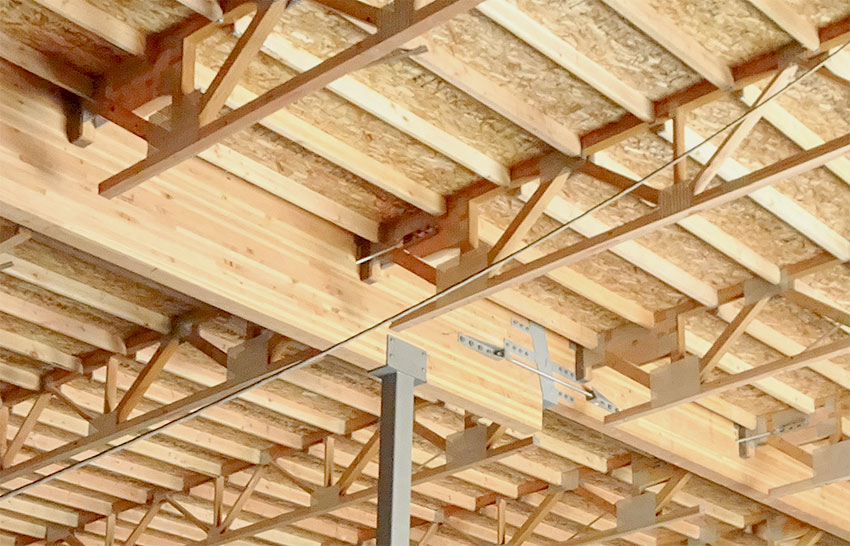
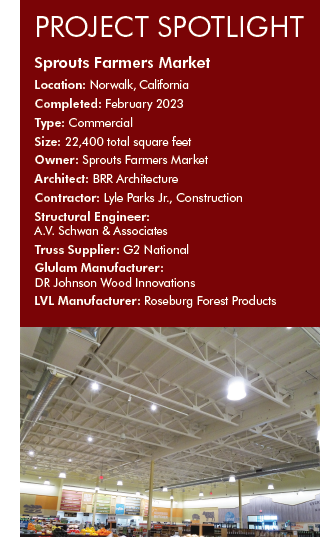 Sprouts Farmers Market, a grocery store specializing in fresh produce and healthy products, offers a familiar presence throughout the country. The store interiors are open and airy, with easy visibility from nearly every vantage point.
Sprouts Farmers Market, a grocery store specializing in fresh produce and healthy products, offers a familiar presence throughout the country. The store interiors are open and airy, with easy visibility from nearly every vantage point.
For many years, the company’s design and construction teams have relied on steel to achieve that look and layout. But for a new location in Norwalk, California, material logistical challenges led the project team down a path to engineered wood. The result showcases engineered wood’s capabilities in achieving span and load capacities with little to no sacrifice of the project’s core design details.
A Grocery Store Built with Wood
Originally, the store was designed as other Sprouts Markets have been, with an entirely steel roof system—a metal deck, steel girders and a steel bar-joist system. But long lead times for steel necessitated a change in materials.
Engineer Mo Kateeb, principal of A.V. Schwan & Associates, turned to wood component manufacturer G2 National to discuss wood alternatives that would still preserve the store’s signature look and volume, as well as performance in the high seismic area.
"Sprouts is the best-looking building on the market, especially the floor. We pay a lot of attention to that,” said Kateeb. “I like the building because of the openness of it. The bright, clean colors. It gives you the vibe that it’s somewhere I want to buy my food from.” Kateeb had used engineered wood for commercial projects in the past, but largely for multifamily buildings. G2 National worked with the engineer to determine which wood systems could replicate the design and performance that steel had been providing, including confirming the manufacturer could accommodate the spans at the depth needed.
The new engineered wood roof system comprised of glulam girders spanning 36 feet, an oriented strand board (OSB) deck, and G2’s G2T 8-foot o.c. panelized wood-plated truss system with laminated veneer lumber (LVL) top and bottom chords. Using the higher strength LVL increased the roof supports’ bending capacity and allowable span to compete with the steel bar-joist system.
Switching from Steel to Wood Significantly Reduced Carbon Emissions
Along with keeping the project on track, replacing the steel roof system with a panelized wood system dramatically reduced the grocery store’s carbon footprint.
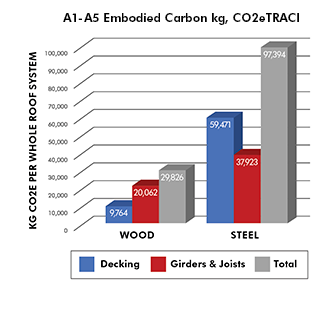 A life-cycle assessment (LCA) was conducted on the entire roof system by third-party firm WoodLife Environmental Consultants on behalf of APA to analyze the energy required during manufacturing, product transport to site, and construction.
A life-cycle assessment (LCA) was conducted on the entire roof system by third-party firm WoodLife Environmental Consultants on behalf of APA to analyze the energy required during manufacturing, product transport to site, and construction.
The LCA found that using a wood roof design rather than steel for the Norwalk Sprouts lowered the roof system’s overall embodied carbon by 69%. And just by switching the roof deck from metal decking to OSB, the design team was able to reduce the CO2 emissions by 49,707 kg, as shown in the graph at the right. That one change accounted for 51% of the reduction in the total CO2 emissions of the roof system.
A1-A5 Embodied Carbon kg, CO2eTRACI graph shows embodied carbon by major steel and wood roof system components for equivalent designs for the Sprouts Farmers Market in Norwalk, California.
Though the move to an engineered wood roof system was initially done out of necessity, the benefits revealed during the process have led to replication of the wood design for some future Sprouts locations.
Find additional project details, information and images in the complete case study – available as a free download.
GET >
Ready to learn more? Watch our on-demand webinar, Sustainable Structures Built with Engineered Wood, for a deeper dive into engineered wood’s role in reducing the carbon footprint of the built environment. Available to view in English or Spanish. CEUs available.
Get a quick rundown on language commonly used in conversations about carbon and the built environment in our Carbon Explainer.
Getting Technical
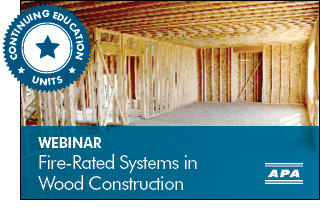 On-Demand Webinar: Fire-Rated Systems in Wood Construction
On-Demand Webinar: Fire-Rated Systems in Wood Construction
While no building is truly fireproof, construction materials and systems can make a building fire safe. This session provides an introduction to fire-rated systems in wood-frame construction. Along with APA's Fire-Rated Systems design and construction guide, this webinar offers guidance on designing and constructing some of the most cost-effective, code-compliant fire-rated construction systems. Participants will learn what's available, what's acceptable and what's best practice.
AIA and ICC credit is available.
VIEW >
Inside The Circle
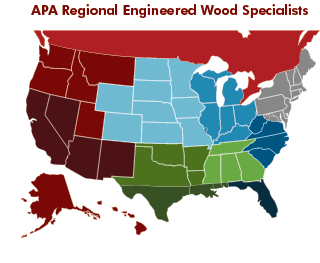 Get Help from Our Team
Get Help from Our Team
Need advice for your next wood-frame commercial project? Want to discuss the best shear wall approach for your design? Need “on the job site” training for your crews on best framing practices? APA’s field services team is available for consultations such as these.
Contact your local Engineered Wood Specialist for assistance and support.
CONTACT >
 Join Our Team
Join Our Team
Based in the Pacific Northwest and looking for a new career opportunity where you can make a difference in a growing industry? APA is hiring an Engineered Wood Specialist to cover the northwest region. Working remotely out of their home office, the specialist works both virtually and travels throughout their assigned region calling on key engineers, builders, code officials, architects and distributors to identify and cultivate relationships; conduct educational meetings, seminars and webinars; and actively participate in trade shows and promotional programs.
Learn more about this role and other current openings.
JOBS >
Archived Newsletters
Summer 2023 GO >
Spring 2023 GO >
Fall 2022 GO >
Spring 2022 GO >
Winter 2022 GO >
Autumn 2021 GO >
Summer 2021 GO >
Spring 2021 GO >
Winter 2021 GO >
Autumn 2020 GO >
Summer 2020 GO >
Spring 2020 GO >